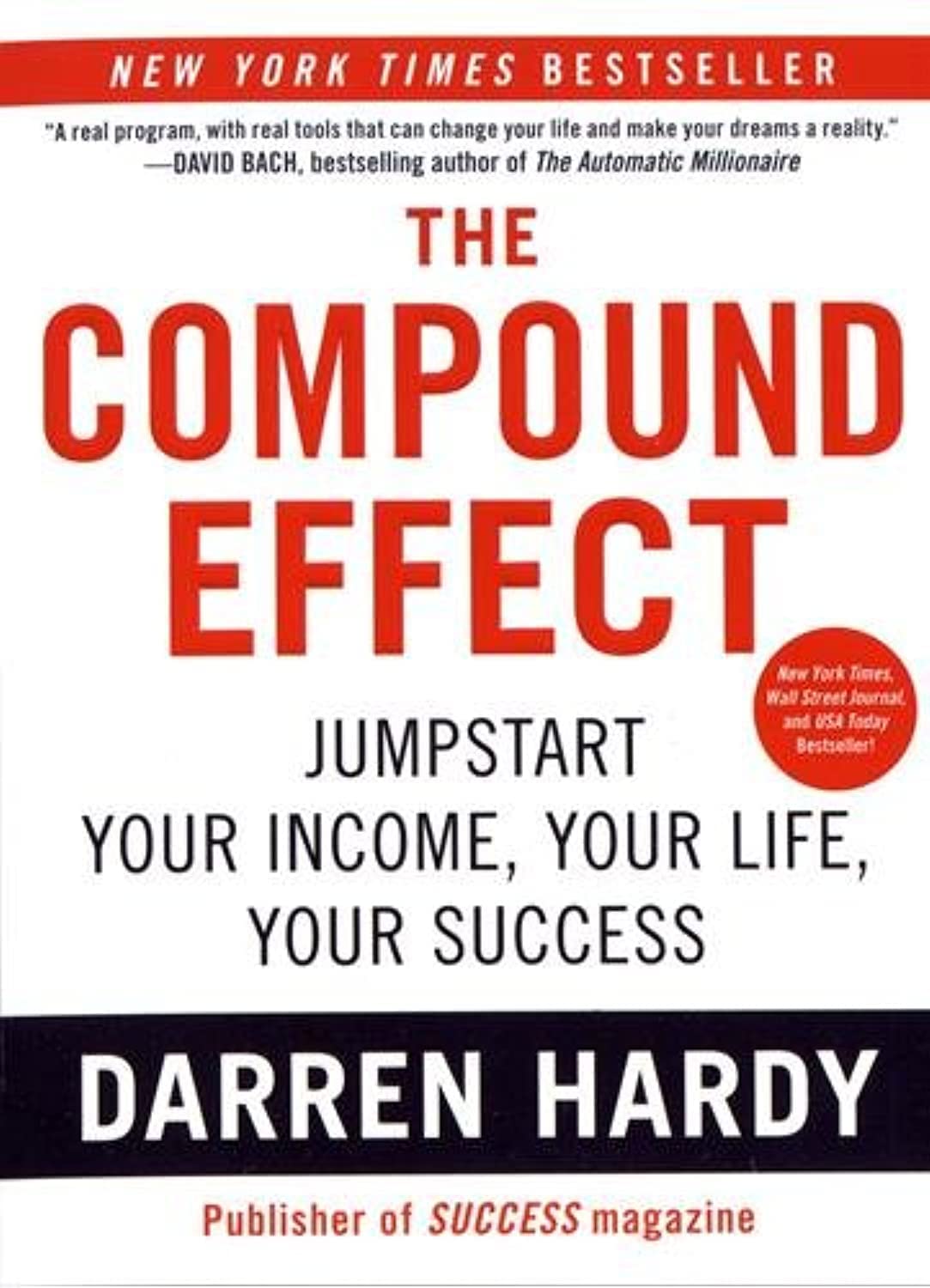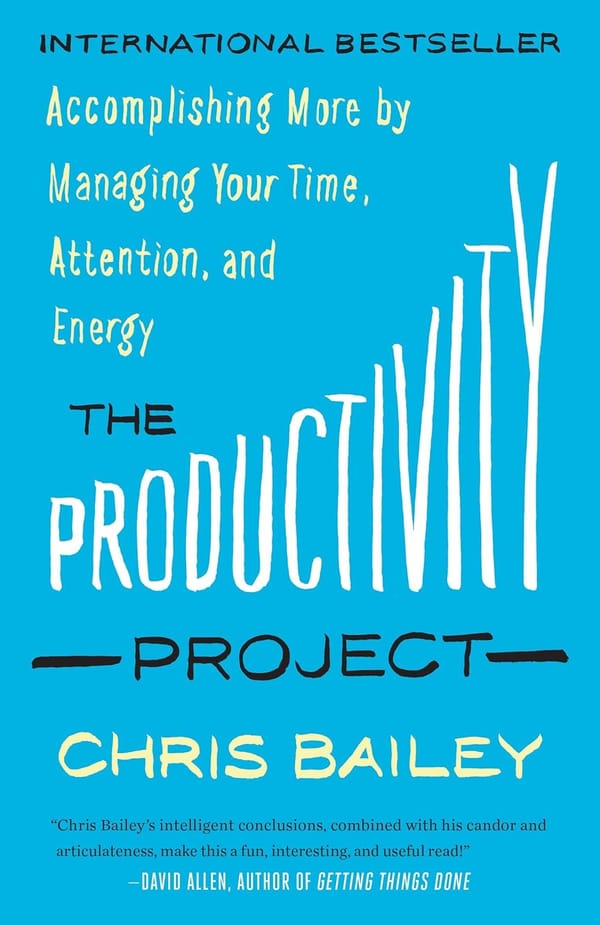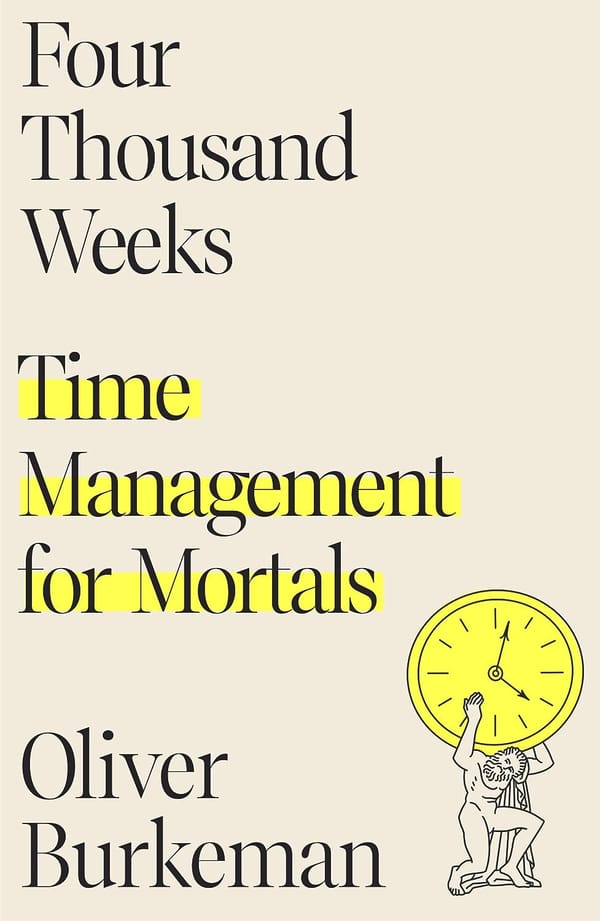The Compound Effect - Book Notes
If you enjoyed my review, consider supporting me by using the affiliate links below to purchase the book. Your kindness fuels my passion for sharing captivating reads with you!
🚀 The Book in 3 Sentences
- "The Compound Effect" explores the transformative power of making small, conscious choices consistently over time, yielding significant results that might initially feel insignificant.
- Darren Hardy emphasizes the challenge of sustained effort before witnessing substantial payoffs and advocates for taking 100 percent responsibility for one's choices to harness personal power.
- The book provides practical strategies for eliminating bad habits, installing positive ones, and underscores the importance of aligning choices with core values for lasting success.
👱 Who Should Read it?
"The Compound Effect" is recommended for individuals seeking personal development, success in various aspects of life, and those interested in understanding the impact of consistent, small choices over time. It is particularly beneficial for readers looking to break harmful habits, establish positive routines, and cultivate a mindset focused on long-term success. Anyone eager to take control of their life, make conscious decisions, and leverage the compound effect for lasting positive change would find value in reading this book.
🍀 How the Book Changed Me
It made me again realize how enormous impact the compound effect can have. I started to use the techniques described to establish new habits, such as running consistently.
✍️ Top 3 Quotes
- "The Compound Effect is the principle of reaping huge rewards from a series of small, smart choices. What’s most interesting about this process to me is that, even though the results are massive, the steps, in the moment, don’t feel significant."
- "The most challenging aspect of the Compound Effect is that we have to keep working away for a while, consistently and efficiently, before we begin to see the payoff."
- "If I always took 100 percent responsibility for everything I experienced—completely owning all of my choices and all the ways I responded to whatever happened to me—I held the power. Everything was up to me. I was responsible for everything I did, didn’t do, or how I responded to what was done to me."
🔨 3 Action Points
- Conscious Tracking and Accountability:
Begin tracking your daily actions, especially those related to areas you want to improve. Use a simple tracking system to bring moment-to-moment awareness to both positive and negative behaviors. - Strategic Habit Formation:
Choose one bad habit you want to eliminate and apply the strategies outlined in the book. Identify triggers, clean your environment, consider alternatives, and either ease into change or make a comprehensive lifestyle shift. - Set Clear Goals Aligned with Core Values:
Define specific, measurable goals that align with your core values and desires. Regularly revisit and refine these goals to ensure they remain a driving force in your decision-making.
📗 Summary & Notes
The Power of Compound Effect:
Darren Hardy's "The Compound Effect" delves into the profound principle of reaping massive rewards from a series of small, smart choices. It emphasizes that while the results may be significant, the individual steps, in the moment, might not feel monumental. The book underscores the importance of consistency and long-term thinking, portraying success as a result of hard work, discipline, and the cultivation of good habits.
When people are given the choice to either get 10'000 $ every day for 31 days, or get 0.01 $ that doubles every day for 31 days, most people will instinctively choose the 10'000 $ a day, because our minds are not good at handling exponential growth. See the below table as an illustration, why you should choose option 2:
| 10'000 $ a day | 0.01 $ that doubles every day | |
| Day 1 | $10'000.00 | $0.01 |
| Day 2 | $20'000.00 | $0.02 |
| Day 3 | $30'000.00 | $0.04 |
| Day 4 | $40'000.00 | $0.08 |
| Day 5 | $50'000.00 | $0.16 |
| Day 6 | $60'000.00 | $0.32 |
| Day 7 | $70'000.00 | $0.64 |
| Day 8 | $80'000.00 | $1.28 |
| Day 9 | $90'000.00 | $2.56 |
| Day 10 | $100'000.00 | $5.12 |
| Day 11 | $110'000.00 | $10.24 |
| Day 12 | $120'000.00 | $20.48 |
| Day 13 | $130'000.00 | $40.96 |
| Day 14 | $140'000.00 | $81.92 |
| Day 15 | $150'000.00 | $163.84 |
| Day 16 | $160'000.00 | $327.68 |
| Day 17 | $170'000.00 | $655.36 |
| Day 18 | $180'000.00 | $1'310.72 |
| Day 19 | $190'000.00 | $2'621.44 |
| Day 20 | $200'000.00 | $5'242.88 |
| Day 21 | $210'000.00 | $10'485.76 |
| Day 22 | $220'000.00 | $20'971.52 |
| Day 23 | $230'000.00 | $41'943.04 |
| Day 24 | $240'000.00 | $83'886.08 |
| Day 25 | $250'000.00 | $167'772.16 |
| Day 26 | $260'000.00 | $335'544.32 |
| Day 27 | $270'000.00 | $671'088.64 |
| Day 28 | $280'000.00 | $1'342'177.28 |
| Day 29 | $290'000.00 | $2'684'354.56 |
| Day 30 | $300'000.00 | $5'368'709.12 |
| Day 31 | $310'000.00 | $10'737'418.24 |
Challenges of the Compound Effect:
Hardy articulates the challenges associated with the Compound Effect, particularly the need for persistent, efficient efforts before tangible payoffs become evident. Success, then and now, is attributed to hard work, discipline, and the cultivation of good habits. The narrative draws attention to the tendency to become complacent after experiencing periods of prosperity, highlighting the incremental and unnoticed nature of negative changes over time.
Complacency and Incremental Change:
The book introduces the concept of complacency, where extended periods of prosperity lead individuals to abandon the behaviors that initially brought them success. The analogy of the frog in boiling water vividly illustrates how incremental and unnoticed changes can be detrimental, urging individuals to stay vigilant and proactive in maintaining effective behaviors.
Frog in boiling water analogy: Imagine you have a pot of water on the stove. If you place a frog directly into boiling water, it will immediately sense the danger and jump out, preserving its life. However, if you place the frog in cool water and gradually heat it, the temperature increase is so incremental that the frog fails to perceive the imminent threat. As the water slowly warms up, the frog becomes accustomed to the changing conditions until it's too late, and the water reaches a boiling point.
The Power of Choices:
Hardy underscores the pivotal role of choices in shaping every aspect of life. Choices, he argues, initiate behaviors that, over time, become habits. The book challenges readers to become conscious of their choices, as half the battle is being unaware of the decisions made in day-to-day life, hindering the ability to consciously change ineffective behaviors.
Taking Responsibility:
Central to the book's philosophy is the idea of taking 100 percent responsibility for everything experienced. By owning all choices and responses, individuals hold the power to shape their destinies. This concept empowers individuals to recognize their agency in every situation and understand the influence of their decisions on the outcomes.
The Formula for Luck:
Hardy demystifies luck as a combination of preparation, attitude, opportunity, and action. By embracing this formula, individuals can proactively shape their own luck, dispelling the notion of luck as a random occurrence. This perspective aligns with the broader theme of the book, emphasizing personal agency and proactive decision-making.
Tracking for Awareness:
Hardy introduces the practical strategy of tracking as a means of increasing awareness of one's actions. By meticulously recording actions related to areas of improvement, individuals bring moment-to-moment attention to their behaviors. This heightened awareness facilitates both the identification of positive actions and the correction of detrimental ones.
Psychological Insights on Habits:
The book delves into the psychological underpinnings of habits, revealing that 95 percent of thoughts, feelings, actions, and achievements are a result of learned habits. While many habits are developed unconsciously, the book contends that individuals can consciously decide to change them. This insight forms the basis for the book's emphasis on making conscious choices to alter ineffective behaviors.
Five Strategies for Eliminating Bad Habits:
- Identify Your Triggers:
Hardy advises individuals to scrutinize their bad habits and pinpoint the underlying triggers—dubbed "The Big 4's"—which include the who, what, where, and when associated with the behavior. Understanding these triggers is essential for devising effective strategies to eliminate the habit. - Clean House:
The author emphasizes the importance of creating an environment that discourages bad habits. This involves physically removing any cues or items associated with the undesired behavior. For example, if trying to quit drinking, removing all alcohol from the house is a crucial step. - Swap It:
Hardy suggests considering alternatives or healthier substitutes for the bad habit. This strategy involves replacing the undesired behavior with a more positive or constructive one. This process helps individuals gradually shift away from the detrimental habit. - Ease In:
Acknowledging the challenge of breaking deeply rooted habits, Hardy advises individuals to take small, gradual steps to ease into eliminating them. This approach recognizes that long-standing habits may require a phased approach to unravel effectively. - Jump In:
Contrary to the gradual approach, Hardy proposes that some individuals may find it more effective to make multiple changes simultaneously. This strategy is based on the idea that a comprehensive lifestyle change can be more impactful, creating a synergistic effect across various areas of life.
Six Techniques for Installing Good Habits:
- Set Yourself Up to Succeed:
Hardy advocates for creating an environment conducive to success when installing good habits. This involves aligning the new habit with one's lifestyle, ensuring that it is feasible and convenient. Practical considerations, such as gym proximity and timing, are essential for establishing a sustainable routine. - Think Addition, Not Subtraction:
Rather than focusing on what to remove, Hardy encourages individuals to concentrate on what they can add to their lives. By adopting a mindset of addition, people can shift their focus to positive behaviors and choices, making the new habit more attractive and sustainable. - Go for a PDA: Public Display of Accountability:
Publicly declaring one's commitment to a new habit can enhance accountability. Sharing goals with others creates a sense of responsibility, as individuals may feel a social obligation to follow through on their intentions. - Find a Success Buddy:
Hardy highlights the power of accountability partnerships. Pairing up with someone who shares similar goals provides mutual support and encouragement. Success buddies can celebrate achievements together and navigate challenges collaboratively. - Competition & Camaraderie:
Introducing an element of friendly competition can add motivation and excitement to habit formation. Hardy suggests creating challenges or competitions with peers, fostering a sense of camaraderie and shared achievement. - Celebrate!:
Recognizing and celebrating achievements along the way is crucial for maintaining motivation. Small rewards, whether daily, weekly, or monthly, provide positive reinforcement and contribute to the overall success of habit formation. Celebrations create a positive feedback loop, reinforcing the importance of consistent efforts.
Immediate Gratification and Bad Habits:
The allure of immediate gratification and its impact on perpetuating bad habits is explored in detail. The book acknowledges the difficulty in resisting the instant payoff derived from bad habits, which often outweighs rational considerations of long-term consequences. This insight encourages readers to reflect on the immediate versus long-term consequences of their actions.
Aligning Choices with Values:
The book stresses the importance of connecting choices to desires and dreams, highlighting that meaningful choices are those aligned with one's core values. Incongruence between actions and values is identified as a significant source of stress. Readers are urged to ask themselves whether their choices align with their core values, offering a practical guide for decision-making.
The Law of Attraction:
"The Compound Effect" introduces the Law of Attraction, a concept that focuses on the power of defining goals to attract desired outcomes. By giving the mind a new set of eyes through goal-setting, individuals can shift their perspectives and actively work towards their aspirations. This aligns with the broader theme of conscious decision-making and proactive goal-setting.



